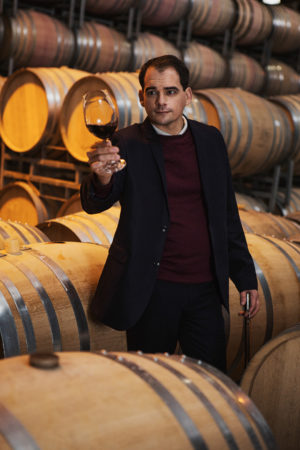
South African wines like the Nederburg brand are doing well in the Philippine market.
CONTRIBUTED PHOTO/SAMUEL VILJOEN
WINE consumption is expected to grow despite price increases brought about by the implementation of the Philippine Government’s Tax Reform for Acceleration and Inclusion Package (TRAIN).
Yogi Ringler, Future Trade International’s (FTI) chief marketing officer, said the growth had been fueled by money coming from Filipinos living and working abroad, and the continued progress of the business process outsourcing (BPO) sector.
Ringler said the price for wines would be expected to increase by 5 to 10 percent by the second quarter of 2019.
But the Filipinos’ fun-loving culture along with more affordable prices sustain the demand for wine in the Philippines.
“Filipinos drink in good times and bad times. For wines, despite the price increases, consumption is still growing,” he said.
FTI distributes wines and spirits in the Philippines carrying 70 brands or 400 products from 20 suppliers.
Ringler said FTI grows by 10 to 12 percent every year in terms of import volume of wines sourced from at least eight countries.
This translates to two million cases or 24 million bottles of wine every year.
He said South African wine brands such as Nederburg are gaining loyalty among the Filipino market with the strong support of Distell.
Distell produces and markets South African wines and other alcoholic drinks.
For FTI, Ringler said Nederburg – with 10 varieties across different price points – has a 20% growth rate nationwide.
“Cebu is growing faster than 20 percent because of increased distribution and presence in different stores along with promotions such which makes Nederburg wines affordable to consumers,” he told reporters at the Nederburg Winemaker Dinner at Circa 1900’s Casa Uno on November 9.
Nederburg
Reenen Barry, commercial and regional business manager of Distell (Asia Pacific) Pte. Ltd., said the Philippines is the fastest growing market in their portfolio.
Top markets include Japan, New Zealand, Australia, India, United Arab Emirates and China.
Barry said South African wines is fairly “new” in the world market compared to other countries because they were only allowed to export in 1994.
With brands such as Nederburg with more than 200 years of history, Barry said South African wines has proven that “the quality you get from the price that you pay is exceptional.”
Nederburg wine can range from P400 to P5,000 per bottle.
At the Nederburg dinner, red winemaker Samuel Viljoen shared the brand puts high value on innovation to cater to the taste of the market.
“If you stop being innovative, you become stagnant,” he said.
The brand, which traces its roots to 1791, is the force behind the 44th Nederburg Auction that puts wine as an “asset investment class.”
The recent auction saw that “buyers are increasingly willing to spend more, trusting that they will reap the benefits of investing in fine, rare wines.”
Awareness
In the Philippines, Ringler said the market, especially the younger generation, are increasingly aware of the health benefits of wine because of social media.
“Most of us were raised being told that wine is expensive but that has changed over time,” he said.
Ringler said there is no law in the Philippines prohibiting wine makers, suppliers and distributors from advertising their products.
However, Ringler said most wine companies do not promote their products because of the high costs of advertisements.
“It is more expensive to produce one bottle of wine than one bottle of scotch or whiskey,” he said.